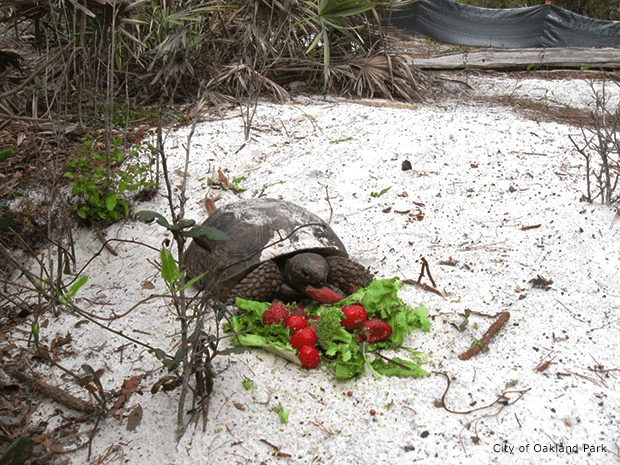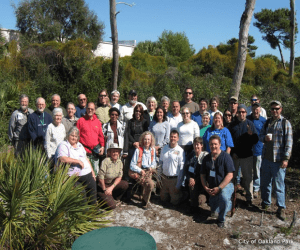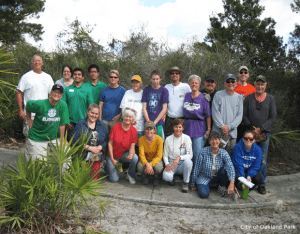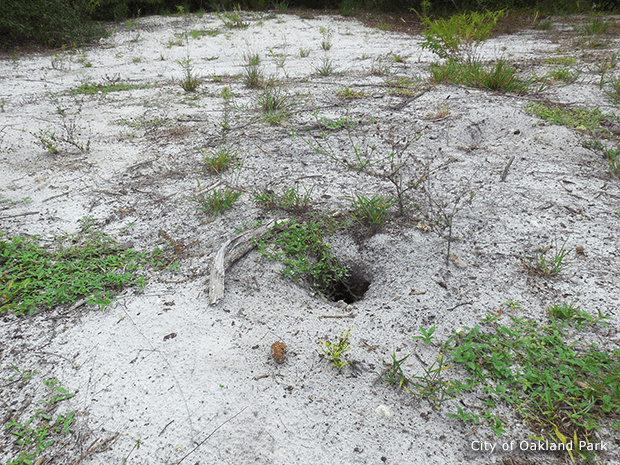We have much more to do and your continued support is needed now more than ever.
Threatened Gopher Tortoises Benefit from Florida Community Wildlife Habitat
Our amazing Garden for Wildlife volunteers in Oakland Park, FL are making a difference for the threatened gopher tortoise. The city, which is located in Broward County and is smack dab in the middle of the Miami metropolitan area, is working to become certified by National Wildlife Federation as a Community Wildlife Habitat™. So far, the core team of volunteer leaders has activated the citizens of Oakland Park to:
- Create and certify more than 150 wildlife habitats and gardens at schools, homes and businesses;
- Educate community members, especially children and youth, through National Wildlife Federation’s Schoolyard Habitats program; and
- Engage in volunteer restoration projects to better understand why wildlife, nature and the environment are important for our health and well-being.
As part of this effort, something special is also happening for tortoises.
Oakland Park Making Room for Gopher Tortoises
Charlie Livio, the NWF Community Wildlife Habitat Team Leader for the city, pitched an idea to the City Council that Oakland Park should become the first site to participate in Florida’s Waif Tortoise Adoption Program. (A “waif” gopher tortoise is one that has been removed from the wild.)
The City Council approved of the idea, and in 2011, they adopted four gopher tortoises located at the Lakeside Sand Pine Preserve (including this one, pictured here snacking on fruits and veggies):

Gopher tortoises are a keystone species that have roamed planet Earth for somewhere between 500,000 and 2 million years. However, due to habitat loss and other threats, they are listed as a federally threatened species in Louisiana, Mississippi and part of Alabama. The State of Florida considers them threatened as well.
Creating Habitat at Lakeside Sand Pine Preserve
Charlie (who also happens to be the city horticulturist and vice president of the city’s Garden Club) knew the Lakeside Sand Pine Preserve was great potential habitat for gopher tortoises. The 5.6-acre remnant sand pine scrub has high, rapidly draining and acidic sands, and is home to more than 75 plant species, including the American Beautyberry, pictured here:

However, due to a lack of natural wildfires and other processes, the preserve is at risk of going through “succession” and becoming a scrub oak hammock. To keep the sand pine scrub in a healthy state for its unique flora and fauna, staff at the preserve organize an annual volunteer habitat restoration and cleanup.


Adding to the Family
After their work improving the habitat in the preserve, the city was approved to adopt two male gopher tortoises in September of 2013. Just a few months later in December, a hatching was reported and seen at the preserve.

Last week, Charlie let us know that he saw a potential new juvenile gopher tortoise burrow (pictured below) on the Lakeside Sand Pine Preserve property—evidence that the tortoises are successfully breeding at the site!

We’re very excited to hear further updates from Charlie and the City of Oakland Park’s Community Wildlife Habitat team. Their work in the Lakeside Sand Pine Preserve and throughout the city has them well on their way to achieving certified Community Wildlife Habitat status.
Is Your Community Certified?
National Wildlife Federation has certified 75 Community Wildlife Habitat sites, and is helping more than 100 other registered sites achieve their certification. What communities are certified in your state?





















